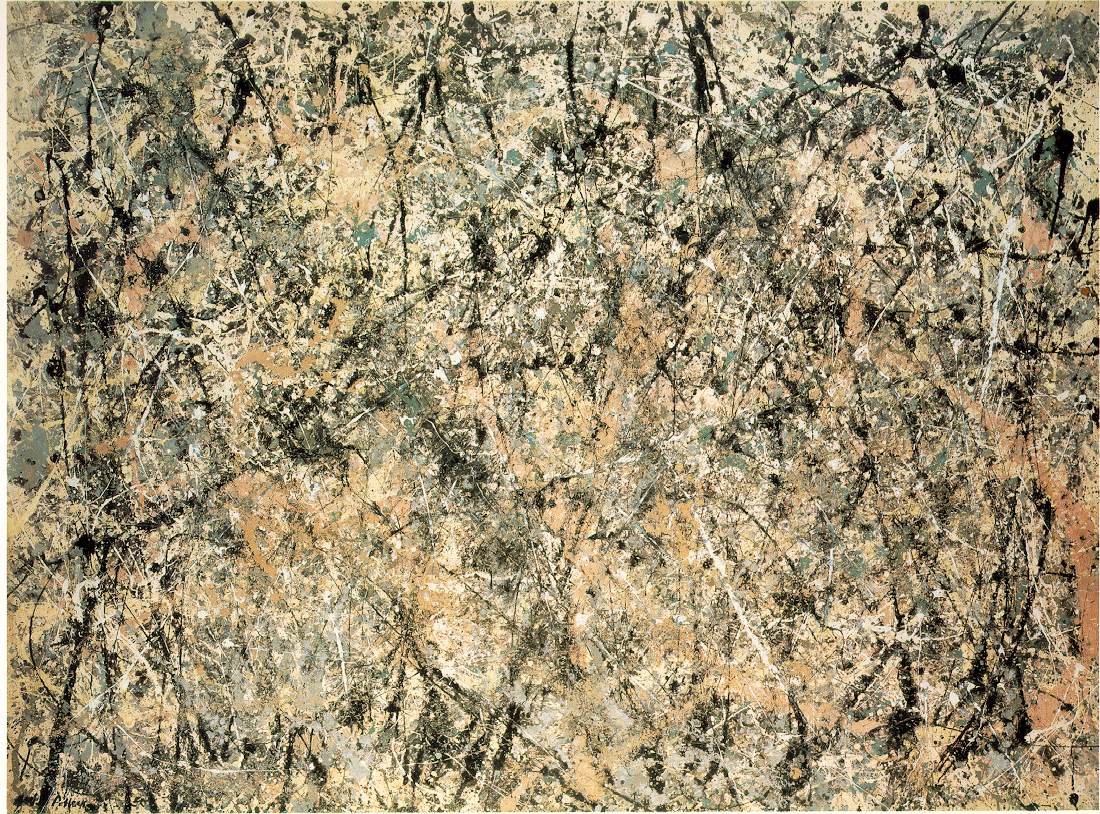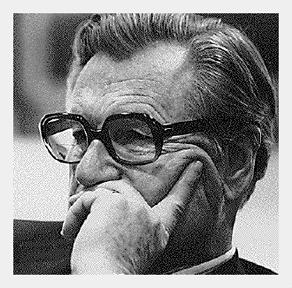
Art for Statistics' Sake
So, I was offered a wonderfully welcomed gift for Christmas -- long-desired framing for any two of the handful of unhung/unframed prints I have stacked into piles since we moved into a house filled with walls requiring plaster and paint before anything else is done. The offer reminded me of a painting, or series of paintings I had read about and always wanted to acquire in print form. Some time back, I was flipping through some schmucky artsy magazine that somehow seemed the most desirable thing to read among the pile of Cosmopolitan, Country Living, and Highlights for Children that provided the alternatives. I stumbled upon an article about two Russian artists named Vitaly Komar and Alex Melamid.
Quick sidenote: My relationship with paintings – i.e. the thing that causes me to like certain works of art – is pretty much exactly backwards, based on what the art world and artists want you to think when looking at art. Generally speaking, I like paintings based on what and how much I learn about the painters, their lives, and their times.
 For example, Jackson Pollock and the other abstract expressionists probably wouldn't have interested me much had I not been first exposed to them through this very cool exhibit at the National Portrait Gallery some time ago, which focused less on the art itself and more on the personalities of the painters.
For example, Jackson Pollock and the other abstract expressionists probably wouldn't have interested me much had I not been first exposed to them through this very cool exhibit at the National Portrait Gallery some time ago, which focused less on the art itself and more on the personalities of the painters.  Also, because the exhibit paired the artists with the Beat Poets and Be-Bop Jazz Musicians of the late 1940s and early 1950s, I could contextualize the work and consider the connections between the visual, the aural, and verbal media that the exhibitor was suggesting. Once I had that frame of reference – historical and cultural – I could then see the paintings for what they were and personally connect with them.
Also, because the exhibit paired the artists with the Beat Poets and Be-Bop Jazz Musicians of the late 1940s and early 1950s, I could contextualize the work and consider the connections between the visual, the aural, and verbal media that the exhibitor was suggesting. Once I had that frame of reference – historical and cultural – I could then see the paintings for what they were and personally connect with them.One more quick tangent: Check out this interesting site, which is apparently dedicated, sort of, to the legacy of Jackson Pollock. I feel like an artist or something …
Right.
So then, I mention all this as prologue to the point about Komar and Melamid. I'm reading this article about a project they had undertaken called the Most Wanted Series, described in an interview with the artists in this article in The Nation. The paintings in this series were produced after the artists polled citizens throughout the world about their likes and dislikes with respect to paintings. The surveys conducted asked an array of questions, from "Do you prefer modern or traditional art?" to "Would you say that you prefer seeing paintings of wild animals, like lions, giraffes, or deer, or that you prefer seeing paintings of domestic animals, like dogs, cats or other pets?" The USA survey asked what sized paintings Americans preferred, revealing:
- dishwasher size: 67%
- full-size refrigerator: 17%
- full wall: 11%
- 19" television": 69%
- a magazine: 24%
- paperback book: 40%
The results were staggering, amusing, and oddly pleasing. Not to be confused with the similarly titled Ice T CD), here was what they came up with for their painting:
"America's Most Wanted (dishwasher sized)"

"America's Most Unwanted (paperback sized)"

They conquered America, turned to a greater world conquest, and observed finally that "regardless of sex, race, education, or income, in paintings, the majority of people preferred landscapes and the color blue." More precisely, as was reported in the New Republic:
Komar and Melamid found, amazingly enough, that the majority of Americans preferred the same painting. Americans overwhelmingly preferred the color blue. They wanted a landscape with mountains, a river, a bit of forest, and a single tree in the foreground. They desired to see George Washington in the painting, as well as three anonymous figures and two deer. What the majority of people did not want was a painting that was abstract.So, Russia's most wanted looks just like America's Most Wanted, only Jesus stands in place of George Washington, and there is a family of bears frolicking in the woods rather than a family of deer drinking from the lake.Even more incredible is that, when Komar and Melamid conducted the poll in countries throughout the world, everyone else wanted the exact same kind of painting, with local variations.
While the artists toured Canada, an Alberta Report reporter took the highroad and succumbed to the possibility that "the Komar and Melamid project raises, in earnest, a real paradox in the arts:
Modern art was supposed to be transnational in its appeal to the working classes, but it has united average viewers of different countries only in their contempt for it. It turns out that people in Turkey and Russia and Kenya want more or less what Canadians want: representational painting, preferably landscapes with mountains, lakes and trees. Although in Kenya there's a hippo where the deer are meant to be.

Kenya's Most Wanted:
"A hippo where the deer are meant to be."
Here's another good overview of the project:
"The People's Choice" is not, of course, an attempt to produce populist art. Like the market-research apparatus that it utilizes, its first aim is to produce a public dialogue--or the appearance of one. In light of the poll's banal conclusions, and the wretched art that issued from it, the higher purpose might be seen as dialectical: to begin to imagine an outcome something like the opposite of the one actually achieved. Whatever a real "people's art" might be, it would not look like this. And yet, in a society where public communication and popular taste seem stage-managed by a vast machinery of statistical smoke and mirrors, this is what you get. Or do you?And they didn't stop at national preferences, as American Prospect observed in 2000:
Komar and Melamid are still at it: Their latest commission – St. Paul, Minnesota's "most wanted" (elk, lighthouse) – was installed this past November at the Minnesota Museum of American Art. The viewer response? "There are a lot of other things I'd prefer to put in my living room," museum-goer Adele Binning told the St. Paul Pioneer Press.American Prospect also recounted Melamid's acknowledgment to Jim Lehrer of "the comedy of creating anything based on the fragmentary preferences of aggregate poll respondents:
"It was our idea to visualize this view of the new kind of dictator, because we grew up in a condition of dictatorship, Lenin, Stalin, et cetera. And when we came to United States, we recognized that another dictator here is the so-called majority."Some other commentators got really earnest about the project and its implications, noting for instance that "the universality of basic visual tastes" identified by Komar and Melamid fit into some evolutionary framework. New Yorker critic Louis Menand thought twice about it:
Vitaly Komar and Alexander Melamid, in 1993, surveyed people's artistic preferences for color, subject matter, style, and so on. They proceeded to make a painting that incorporated all of the top-rated elements: it was a nineteenth-century realist landscape featuring children, deer, and the figure of George Washington. … exemplify[ying] the kind of landscape that had been characterized as optimal for our species by researchers in evolutionary aesthetics. …Maybe that's the joy of it. If it wasn't preposterous, would we be able to stand it?
[yet] Komar and Melamid are satirists. They set out to find the visual lowest common denominator, and the work they produced … is preposterous even as kitsch.
After all, we know what happens when an opportunist gets a hold of the same thesis, wipes away any remains of a smirk, and opens a kiosk in the middle of every mall in America. Were they not avowed Communists, Komar and Melamid could probably stand to recover some of the 10s of millions earned by Thomas Kinkade, in part by taking their preposterous idea and selling it as the real deal.
 There is no shortage of opinions on the Kinkade empire, as critic Shaila Dewan observed in her 1999 article in Houston Press, "Study in Green: People love Thomas Kinkade, the Painter of Light. Is that a problem?" (see below for the full article)
There is no shortage of opinions on the Kinkade empire, as critic Shaila Dewan observed in her 1999 article in Houston Press, "Study in Green: People love Thomas Kinkade, the Painter of Light. Is that a problem?" (see below for the full article)However, I highlight one of the many readable points made by Ms. Dewan – just because something is "beautiful" in the eyes of many does not mean that it should be celebrated or emulated. Through art, she suggests, artists should seek to convey their own new ideas and convey them in the most beautiful fashion. As observers, we should seek to be challenged beyond our preexisting, aesthetic comfort-zone, while still demanding from artists the "beautiful."
She notes that:
Left in Kinkade's hands, the subversive potential of beauty drains away instantly. … Kinkade uses [beauty] to persuade his viewers of the glory of singsong family values – not a challenging task … and therein lies its weakness. It doesn't persuade anyone of anything new.One way or another, beauty or no beauty, a little part of me still strives to find – by eBay or whatever – a framed print of America's Most Wanted … if only to hang in my basement guy's lair alongside my other pieces of guy art, to be enjoyed passively and sardonically in glances between foozball points or hands of poker.
Study in Green:
People love Thomas Kinkade, the Painter of Light. Is that a problem?
By Shaila Dewan
Houston Press
May 27, 1999
It was a certain morbid curiosity that drew us, two artists and me, to the Westin Galleria one afternoon in late March to witness a personal appearance by California painter Thomas Kinkade, variously known as America's most collected artist, the only artist traded on the New York Stock Exchange, and the Painter of Light*. Here was an artist who has five galleries devoted solely to his work in the Houston area alone, whose fans own three, ten, 20 of his paintings (at around $1,000 a pop), and who – here's the kicker – advertises on television. Yet until two days before, I had never heard of the guy.
The three of us, having successfully infiltrated the Laura Ashley set, were soon casting politely inscrutable glances at each other, the message of which boiled down to this: As much scorn as we could easily heap on Kinkade's treacly little paintings, never had more than 600 people paid $15 a head to get my autograph, and never had my friends received a standing ovation the minute they walked on a stage to talk about their art.
Thomas Kinkade makes the ultimate Republican paintings. Unlike Norman Rockwell, to whom Kinkade compares himself, he depicts the world as he would like it to be rather than as it is, steeping everything in a pickling fluid of hazy golden light. His cozy cottages glow with hearthfire (his galleries are equipped with dimmers so you can see how the paintings seem to light up in the darkness). His gardens bloom lavishly. Trellises dangle above clear rivers, dew-coated stone bridges span twinkling streams. Mountains, untrammeled by timber companies or pollutants, rise in salute of America the Beautiful in all its God-fearing glory.
Like his paintings, Kinkade's rehearsed version of his life story seemed too idyllic to be true: He married his childhood sweetheart, taught himself to paint, risked his life savings to do his first print (which sold out and is now worth a lot of money), had four daughters and inscribes the first initial of his wife, Nanette, in secret places on his paintings in acknowledgment of her contribution to his life. His collectors and dealers believe that Kinkade is close to the Lord, and he encourages the notion that his business is actually a ministry: When you buy one of his paintings, he told the crowd, you "light a candle."
Which is not to say that his work appeals only to Christians. Media Arts Group, Inc., the company that has made Thomas Kinkade's name into a "lifestyle brand" a la Martha Stewart, has deals with Avon, Hallmark, La-Z-Boy and most recently, U.S. Home (which will build houses based on those in Kinkade's paintings). His collectors are women (79 percent), homeowners (87 percent), empty nesters (66 percent) and rich (46 percent average $80,000 annually). The company trades on Kinkade's appeal for "just about everyone"; every American wall is a sales opportunity, and national trends toward "nesting" and "cocooning" are viewed as favorable to Media Arts's business climate.
It didn't take much for Kinkade to sustain his audience's conviction that he's the real thing. His cute daughter dispensed chintzy prizes (Beanie Babies she decorated herself) to the couple who had been married the longest and the couple who had the most kids. I was surprised she didn't also give a prize to the person who owned the most Kinkades, although the artist did ask for a show of hands on that issue too. Kinkade made a small (I think it was $2,000) donation to a local charity in the form of one of those giant, camera-friendly checks.
Kinkade's success irked me, the way it irks me that the Alley Theatre's schmaltz-laden musical Jekyll & Hyde could go on to enjoy a critic-defying success on Broadway (not to mention the way it irks me that the Alley spells theatre as if that were somehow better than theater). Yet it also humbled me. Here was an artist whose work real people craved, people who saved their money to buy the latest limited edition (Kinkade's originals, apparently worth a few hundred thousand dollars apiece, are not for sale; instead, they are reprinted on canvases and highlighted by hand). I felt like an art snob. I thought about buying stock.
Of course, much of the credit for Kinkade's success goes to his efficient marketing machine, which works overtime to assure the collector that she is getting something important. Unlike installations, ephemeral art, site-specific works, tubs of Jell-O, naked people coated in liquid latex, and other contemporary art statements that have made appearances in Houston of late, Kinkade's paintings have clear monetary value and a strict hierarchy of price. In a marketing scheme whose pretension is akin to theatre, Kinkade has standard numbered prints, artist proofs, gallery proofs, publisher proofs, international proofs, atelier national and international editions, renaissance editions and studio proofs. Kinkade understands that Walter Benjamin was wrong when he predicted that mechanical reproduction would decrease an image's value: He's got calendars and address books, Hallmark cards and tapestries. One in 20 American homes, according to the company's Web site, is graced by a Thomas Kinkade image.
This doesn't mean, of course, that artists should start watching reruns of The Joy of Painting and setting up their easels en masse on misty mornings. The idea that art should, as Kinkade so cleverly does, give the public what they want has already been made mincemeat of by Komar and Melamid, the Soviet emigres who poll viewers to find out what colors, scenes and elements they want in their art and make paintings such as America's Most Wanted, which features a lot of blue, a nature scene and a portrait of George Washington. It's a really ugly painting.
While I didn't see Kinkade's landscapes, homes and (for the adventurous) "impressionistic plein-air works" as particularly interesting in and of themselves, I was interested in how his work related to contemporary art's much-lamented "failure" to reach a "mainstream" audience. (The presumption is, of course, that art should reach a mainstream audience, which I'm not so sure about.) According to critic Dave Hickey, who has been at one end of the debate over this issue for several years, the problem has been contemporary art's rejection of the beautiful in favor of the virtuous. Since beauty sells, Hickey wrote in 1993, ridiculing the art world for its horror of commercialism, beauty is suspect. The network of museums and nonprofit art spaces – "therapeutic institutions," Hickey calls them – fails to avail itself of "the subversive potential of visual pleasure."
Of course, to carry Hickey's love of mass culture and commercialism to its very extreme (which I don't think Hickey really wants to do) is to get stuck with Thomas Kinkade. Left in Kinkade's hands, the subversive potential of beauty drains away instantly. If, as Hickey argues, Robert Mapplethorpe used beauty to persuade viewers of the glory of gay sex, then Kinkade uses it to persuade his viewers of the glory of singsong family values – not a challenging task. If beauty is a rhetorical tool, Hickey says, one can distinguish among "the most beautiful image," which simply appeals to the most people, "the most effective beautiful image," which makes the most extreme set of values palatable to the most people, and the "most efficient beautiful image," which sneaks transgressive content into the homes of the elite and influential. Kinkade's work falls under the first category, and therein lies its weakness. It doesn't persuade anyone of anything new.
Hickey's beauty juggernaut has gone on long enough, and been influential enough, to have given rise to a backlash. In the extended multicultural symposium that was the art world of the late '80s and early '90s, Hickey's theories could be used as an excuse to go home early. Because of that, they've recently been attacked (wrongly, I think) as patriarchal and exclusionary. Although Hickey never has to my knowledge advocated a universal beauty – to him, visual pleasure is a tool artists forgot to use rather than an absolute measure of quality – he has been assailed both for asserting white, male privilege in resuscitating beauty and for pandering to the masses. The former charge rings hollow; the latter somewhat true. Writing in a Los Angeles art magazine whose latest issue was primarily devoted to beauty-bashing, Peter Lunenfeld called Hickey's position defeatist: "If you can't beat the middlebrow, why not join it."
Hickey attacks the fact that artists decline to give the market what it demands as a petulant refusal to acknowledge the audience, and accuses the nonprofits set up to handle this nonmarketable art of neutering art's power – and in both cases he is providing a valuable service. The resentment comes, I suppose, because Hickey has not critiqued the market itself in terms of the escapist, Republican pablum that can gain ascendancy there. Is it really fair for Hickey to champion the tastes of the people and ignore Thomas Kinkade? It's true that the market has room for many, many opinions, but market forces tend to push product in one direction. Hickey may use the market as a whip for an art world that depends in no small part on market-free but agenda-laden charity funds. But he can't claim that all that sells is good.























